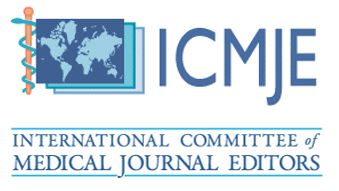Application of Recombinant Human Bone Morphogenetic Protein-2 (RhBMP-2) in the Reconstruction of Edentulous Posterior Maxilla: Clinical Protocol, Histological Analysis, and Long-Term Implant Success and Survival Rates
George Deryabin, DDS1*, Simonas Grybauskas, DDS, MD, PhD2 and Tadas Korzinskas, DDS, Dr. Med. Dent3
1 3574 Melrose dr., Wooster, Ohio, 44691, USA.
2 S’OS Orthognathic Surgery, Vytenio 22-201, Vilnius, Lithuania.
3 Private Practice, Bokštų 9, LT-92125 Klaipeda, Lithuania.
*Corresponding Author: George Deryabin, DDS, 3574 Melrose dr., Wooster, Ohio, 44691, USA.
DOI: https://doi.org/10.58624/SVOADE.2023.04.0160
Received: November 07, 2023 Published: November 29, 2023
Abstract
Background: This study evaluated the efficacy of recombinant human bone morphogenetic protein-2 (rhBMP-2) in inducing de novo bone formation during the augmentation of the severely resorbed posterior maxilla for dental implant placement.
Methods: Composite grafts consisting of rhBMP-2/absorbable collagen sponge (ACS) mixed with deproteinized bovine bone mineral (DBBM) Bio-Oss in a 1:1 ratio were used to reconstruct severely resorbed posterior maxillae in 13 patients (five men, eight women; age range: 50 to 66 years). Three patients were treated with sinus floor augmentation alone, and 10 patients with a combination of sinus floor augmentation and guided bone regeneration. A total of 71 dental implants were used in this study. The residual bone height below the maxillary sinus ranged from 0.5 to 3.0 mm. Clinical, radiological, and histomorphometric analyses were performed to assess the outcomes of bone augmentation.
Results: The healing period was uneventful in all patients. The mean alveolar ridge height increased by 14 mm (range, 10–18 mm) and the mean alveolar width increased by 6 mm (range, 4–7 mm). Histopathological analysis revealed that newly formed bone was detectable throughout the implantation sites of sinus biopsies. The analysis of vascularization of the implant bed revealed large numbers of high-lumen vessels, in addition to moderate numbers of smaller blood vessels within the connective tissue. The histomorphometrical analysis of the tissue distribution showed that the amount of newly formed bone was 20.39 ± 4.95%, the amount of the remaining bone substitute was 41.85 ± 11.97%, and connective tissue was 37.76 ± 8.82%. The overall dental implant success and survival rates were 100% and remained unchanged at a follow-up period of 3 to 12 years.
Conclusions: The results of this study demonstrated that a composite graft of rhBMP-2/ACS and DBBM can result in predictable reconstruction of a large bone volume of the maxilla for dental implant placement and functional loading.
Keywords: Recombinant human bone morphogenetic protein-2, maxillary sinus floor augmentation, guided bone regeneration, dental implant survival rate, dental implant success rate
Citation: Deryabin G, Grybauskas S, Korzinskas T. Application of Recombinant Human Bone Morphogenetic Protein-2 (RhBMP-2) in the Reconstruction of Edentulous Posterior Maxilla: Clinical Protocol, Histological Analysis, and Long-Term Implant Success and Survival Rates. SVOA Dentistry 2023, 4:6, 260-272.











